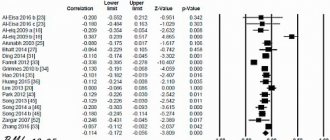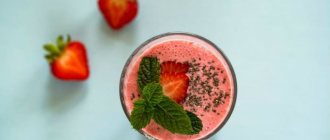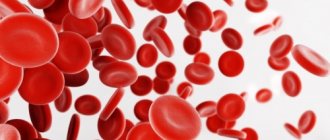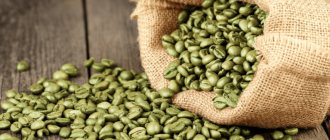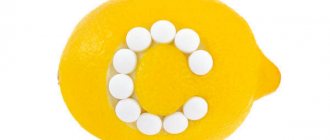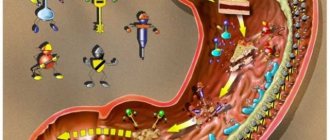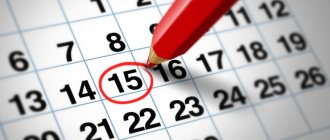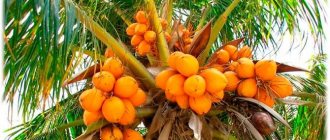Basic rules of therapeutic nutrition for low hemoglobin
The goal of therapeutic nutrition for anemia is to provide the body with all nutrients, vitamins and microelements, in particular iron, which is necessary to increase hemoglobin levels. This diet increases the body's defenses, restores its functions and improves the patient's quality of life.
The diet for iron deficiency anemia is physiologically complete, its calorie content is high, and the content of proteins, microelements and vitamins is increased. Carbohydrates remain at the standard level, and the fat content is slightly reduced.
According to Pevzner’s classification, the diet for iron deficiency anemia is treatment table No. 11. According to Order No. 330 of the Ministry of Health of the Russian Federation, in medical institutions, nutrition for this disease corresponds to a high protein diet (HPD).
Daily content of nutrients, vitamins and microelements:
- proteins – 120g, of which at least 60% are proteins of animal origin;
- fats – 80-90g, of which 30% vegetable fats;
- carbohydrates – 300-350g;
- vitamin A – 1 mg;
- carotene – 8.5 mg;
- vitamin B1 - 2 mg;
- vitamin B6 – 4 mg;
- nicotinic acid – 30 mg;
- vitamin C – 200 mg;
- sodium - 4g;
- calcium - 1.4g;
- magnesium - 0.6g;
- phosphorus – 2.2g;
- iron - 0.055g.
The energy value of the diet is 3000-3500 kilocalories per day.
Basic principles
- diet; Meals should be fractional: from 4 to 6 times a day. Frequent eating in small quantities stimulates the patient's appetite (and with anemia it is usually weakened), allows maximum absorption of nutrients, vitamins and microelements, and also normalizes the functioning of the digestive tract, which is important if the patient has concomitant diseases. Fractional nutrition allows the body to better perceive dishes and foods that are high in calories.
- treatment of the underlying disease; The main principle of treatment is the identification of disorders in the body that led to anemia and their correction. As is known, iron deficiency anemia is not an independent disease, but only one of the symptoms of a pathology. Therefore, following a diet will be ineffective without treating the underlying disease.
- food temperature; The food temperature should be standard, as in other diets (15-60 degrees Celsius). Too cold or hot food irritates the gastrointestinal tract, which negatively affects digestion and, in particular, the absorption of iron.
- culinary processing; Any culinary processing of products (stewing, steaming, boiling or baking) is allowed, except for frying. When frying, a large amount of fat is used, which is contraindicated in case of anemia; products of their oxidation are formed, which negatively affect the human body as a whole, and especially the digestive tract.
- preparation of dishes and serving; To stimulate the appetite of a patient with iron deficiency anemia, it is important to set the table beautifully and prepare tasty and appetizing-looking dishes.
- alcohol; Alcohol intake in medical nutrition for iron deficiency anemia is excluded. Ethyl alcohol interferes with the absorption of iron and other trace elements and negatively affects the functions of the liver, where hemoglobin is destroyed and bilirubin is synthesized. And since during anemia the body also experiences a lack of hemoglobin, in the presence of an underlying disease this can lead to jaundice.
- salt and liquid; The consumption of free fluid during anemia is within the physiological norm (2-2.5 liters). A decrease in drinking norm leads to blood thickening, which aggravates the hypoxic processes that occur with anemia. Table salt is consumed in a normal amount - 8-12g, and with reduced gastric secretion for the synthesis of hydrochloric acid, the consumption of sodium chloride increases to 15g.
How to notice that hemoglobin is low
There are a number of symptoms that indicate that these indicators have been reduced to a level where it becomes harmful to health. The first symptoms are:
- Sleep disturbance
- Dizziness appears
- The lips turn blue, and the skin, on the contrary, becomes too white
- Shortness of breath appears, even when walking short distances
- Severe fatigue sets in
- Leg cramps appear
- Heart rate increases.
All these symptoms indicate a problem that should be solved as soon as possible. If several symptoms occur at once, you should immediately consult a doctor and get tested. Then you need to start fixing the problem.
Authorized Products
First of all, the diet for iron deficiency anemia should contain an increased amount of proteins, which increase the absorption of iron by the body and are necessary substances for the construction of hemoglobin.
Up to 2/3 of the protein consumed should be of animal origin.
It is important to more often introduce into the patient’s menu foods rich in microelements involved in hematopoiesis (iron, cobalt, zinc, manganese). The listed microelements are found in many cereals, meat products, vegetables and herbs.
Consumption of vitamins (group B, folic and nicotinic acid, vitamin C) should increase by 1.5-2 times. Ascorbic acid helps iron to be absorbed, and the other listed vitamins take part in hematopoiesis. Vitamins are found in large quantities in vegetables, fruits and berries.
Calcium is necessary for the skeletal system; in addition, it regulates the functioning of the cardiovascular system and takes part in blood clotting. You can get calcium from dairy products, but it makes sense to take into account that taking dairy and protein products is incompatible, since calcium makes it difficult to absorb iron.
The list of foods for iron deficiency anemia is quite extensive; almost everything is recommended for the patient, unless there are specific restrictions for taking certain dishes:
- any bread, but preferably bran bread (a source of B vitamins);
- rich broths and soups made from them (contain extractive substances that stimulate appetite);
- lean meats, beef tongue, veal, beef, pork liver (mainly) and beef, kidneys - a source of iron;
- fresh vegetable salads seasoned with vegetable oil are sources of vitamins;
- jellied fish or tongue;
- canned fish, any fish;
- lean poultry;
- cereals, especially buckwheat, barley, oatmeal - a source of iron;
- red and black caviar, any seafood;
- any milk and lactic acid products, including cottage cheese and cheese;
- smoked meats (in the absence of contraindications);
- Any greens in large quantities are a source of folic acid;
- sauces: milk, egg, sour cream, tomato;
- spices in acceptable quantities (they contain many trace elements, moreover, they stimulate the appetite);
- eggs in any form;
- honey - a source of microelements, jam, sugar, any sweets;
- currants, gooseberries, raspberries, strawberries, wild strawberries (lots of vitamin C);
- any fruit, especially apricots and peaches;
- butter and vegetable oils in dishes in moderation (easily digestible fats);
- juices, preferably with pulp, rosehip decoction, weak tea, decoction of wheat and oatmeal;
- any side dishes;
- legumes
Table: iron content in basic foods
| Animal products | Products of plant origin | ||
| Name | Content (mg/100g) | Name | Content (mg/100g) |
| Cheese made from skim milk | 37 | Beans | 72 |
| Pork liver | 29,7 | Hazelnuts | 51 |
| Swiss cheese | 19 | Tahini halva | 50,1 |
| Brewer's yeast | 18 | Cereals | 45 |
| Beef liver | 9 | Fresh mushrooms | 35 |
| Beef kidneys | 7 | Sunflower halva | 33,2 |
| Heart | 6,3 | Millet groats | 31 |
| Yolk | 6 | Poppy | 24 |
| Beef tongue | 5 | Peas | 20 |
| Rabbit (meat) | 4,5 | Sea kale | 16 |
| Turkey meat | 4 | Dried apples | 15 |
| Mutton | 3,1 | Dried pear | 13 |
| Veal | 2,9 | Prunes | 13 |
| Beef | 2,8 | Dried apricots | 12 |
| Chicken meat | 2,5 | Cocoa | 11 |
| Mackerel | 2,5 | Dried apricots | 11 |
| Chicken egg | 2,5 | Rose hip | 11 |
| Carp | 2,2 | Buckwheat | 8 |
| Sausages | 1,9 | Blueberry | 8 |
| Chum salmon caviar | 1,8 | Oatmeal | 6 |
| Sausage | 1,7 | Dried mushrooms | 5,5 |
| Chicken | 1,6 | Almond | 5 |
| Pork | 1,6 | Oatmeal | 4,3 |
| Burbot | 1,4 | Dogwood | 4,1 |
| Pasta | 1,2 | Peach | 4,1 |
| Sea fish | 1,2 | Apricots | 4 |
| Honey | 1,1 | Nectarine | 4 |
| Atlantic herring. | 1 | Wheat groats | 3,9 |
| Breast milk | 0,7 | Wheat flour | 3,3 |
| Cod | 0,6 | Spinach | 3,3 |
| Cottage cheese | 0,4 | Buckwheat flour | 3,2 |
| Egg white | 0,2 | Raisin | 3 |
| Cow's milk | 0,1 | Dried apricots | 2,6 |
| Cream | 0,1 | Apples with red skin | 2,5 |
| Butter | 0,1 | Pear | 2,3 |
| Plum | 2,3 | ||
| Prunes | 2,1 | ||
| Black currant | 2,1 | ||
| Apples are fresh. | 2 | ||
| Cherry plum | 1,9 | ||
| Raspberries | 1,8 | ||
| parsley | 1,8 | ||
| Cherries | 1,8 | ||
| Semolina | 1,6 | ||
| Gooseberry | 1,6 | ||
| Raspberries | 1,6 | ||
| White bread | 1,5 | ||
| Cauliflower | 1,5 | ||
| Cherry | 1,4 | ||
| Beet | 1,4 | ||
| Rice | 1,3 | ||
| Cabbage | 1,2 | ||
| Fried potato | 1,2 | ||
| Carrot | 1,1 | ||
| Melon | 1 | ||
| Corn | 1 | ||
| cucumbers | 0,9 | ||
| Grenades | 0,8 | ||
| Boiled potatoes | 0,8 | ||
| Carrot | 0,8 | ||
| Pumpkin | 0,8 | ||
| Strawberry | 0,7 | ||
| Banana | 0,6 | ||
| Grape | 0,6 | ||
| Cranberry | 0,6 | ||
| Lemon | 0,6 | ||
| Tomatoes | 0,6 | ||
| Rhubarb | 0,6 | ||
| Salad | 0,6 | ||
| Orange | 0,4 | ||
| Cowberry | 0,4 | ||
| Zucchini | 0,4 | ||
| Mandarin | 0,4 | ||
| A pineapple | 0,3 |
Additional recommendations
It is recommended to carefully monitor your diet. Men and women with anemic symptoms should absolutely not fast. At the same time, you will need to avoid overeating. It is advisable to eat without long breaks, making sure that the portions are moderate but satisfying.
It is recommended to enrich the table with vegetables and herbs, not too fatty meat and fish, and dairy products. Doctors warn that in adulthood you should not engage in various experiments. At this stage of life, it is undesirable to practice vegetarianism, as well as other unsafe “innovations”.
Porridge is a must on the menu. Buckwheat has the greatest benefits. It is allowed to periodically eat beets, cabbage, and chicken eggs. Legumes are not prohibited, but as a person ages, they become less digestible.
A common problem of old age is poor dental health. Chopping raw vegetables using a grater or blender helps make eating easier.
Old age requires careful treatment of your own body. During this period of life, detailed medical examinations are required and the required tests are taken. At the slightest deterioration, you must immediately seek qualified help. There is no need to leave old diseases unattended. It is advisable for persons with such diagnoses to be under the supervision of specialists.
Anemia always requires early detection and the closest attention. It is most difficult in people over 60-65 years of age. During this period, it will not be superfluous to have another medical examination, which will help identify the problem and clarify the circumstances of its occurrence.
If anemic signs are detected, it is important to follow all the doctor’s instructions to successfully get rid of the pathology and prevent an unwanted relapse.
Prohibited Products
The list of prohibited foods in the diet for iron deficiency anemia is not so long.
Fats are limited, especially refractory fats that inhibit hematopoiesis, so you should refrain from eating fatty meat, poultry, fish oil, lard, and you should also not include lamb and beef fats in the menu.
Marinades should be excluded: they destroy red blood cells and stimulate the functioning of the gallbladder and pancreas.
It is not recommended to eat cakes and pastries with butter creams, as well as strong tea, coffee and Coca-Cola: these drinks contain caffeine, which interferes with the absorption of iron.
How else does coffee affect the body?
As for the negative effects, with the exception of the detrimental effect on hemoglobin content in the blood, coffee can stimulate the following processes :
- prolonged increase in pressure;
- excessive stimulation of the nervous system when abused;
- leaching of calcium, magnesium and potassium from the body;
- development of varicose veins.
On the other hand, coffee, subject to proper and moderate consumption, can have the following positive effects on the body:
- improvement of the patient’s condition during attacks of hypertension;
- improved blood circulation;
- stimulation of the endocrine and digestive systems;
- improved performance due to stimulation of the central nervous system;
- replenishing the deficiency of a certain group of nutrients.
In addition, according to the results of clinical studies, consumption of natural black coffee without sugar can stop the development of malignant formations and increase hemoglobin levels.
Consequences of not following the diet
The consequences of iron deficiency anemia include progression of the disease. Very low hemoglobin can cause:
- myodystrophy;
- atrophy of the mucous membranes of the digestive tract, genital organs and respiratory system.
In addition, low hemoglobin levels affect the cardiovascular system and lead to the development of pathological conditions. We should not forget about the weakening of the immune system, which is fraught with the occurrence of various infectious diseases.
The effect of the drink on hemoglobin
In addition to the beneficial vitamins, minerals, sugars and organic acids that cognac inherited from grapes, the drink contains ethyl alcohol, which is the source of the usual dispute between supporters and opponents of treating anemia with this noble drink.
The mechanism of alcohol's effect on hemoglobin levels is complex. An erythrocyte is the main blood cell that has a complex structure. The composition of the red blood cell includes the protein compound hemoglobin, which also includes iron as the main component: no iron, no hemoglobin.
When drinking alcohol for the first time:
- iron absorption increases;
- the amount of iron increases due to increased blood viscosity and dehydration of the body.
But few people think about what happens next.
While improving, on the one hand, the absorption of iron, alcohol still subsequently reduces the level of hemoglobin due to the destruction of red blood cells - erythrocytes. But they contain hemoglobin along with iron. Ethanol simply dissolves the outer membranes of red blood cells, causing them to stick together and lose their functionality.
Therefore, answering the question about the effect of this noble drink on the circulatory system, we can definitely say that its regular use leads to anemia.
Is it possible to drink when the level is low?
No one denies the increase in iron content after using cognac. But this happens only at the first moment, with a small dose.
With systematic consumption of the drink, a decrease in hemoglobin levels is observed, since the destruction of red blood cells occurs at a much higher rate than the absorption of iron from food. As a result, persistent anemia, or anemia, may develop.
In addition, regular drinking leads to blood thickening. This increases the likelihood of clots and blood clots. Thrombosis develops into life-threatening pathologies such as cerebral stroke and myocardial infarction.
Is it possible to drink at elevated levels?
If regular drinking leads to a decrease in hemoglobin, does this mean that alcohol can be used as a means of purposefully lowering it? High hemoglobin is often observed in pathologies of the cardiovascular system such as:
- increased blood clotting;
- thrombosis;
- varicose veins;
- increased blood pressure.
And if alcohol is consumed in the presence of these diseases, then, in addition to the development of anemia, the patient aggravates his condition, receiving:
- increased blood clotting;
- thrombosis;
- varicose veins;
- increased blood pressure.
Therefore, both low and high hemoglobin are a contraindication to drinking cognac as a drink.
Diet that quickly increases plasma hemoglobin
In addition to the basic nutrition system, there is a diet that helps to urgently and quickly raise the level of iron in the blood and in just a couple of days bring hemoglobin to normal for age. Along with taking a drug specifically prescribed by your doctor, you must consume a certain amount of products from the list of permitted products.
Diets are divided according to the type of disease; it is also necessary to take into account the level of iron in the drug prescribed during the diet. Some foods - low-fat fish, chicken liver and oatmeal - are recommended for all categories of patients.
Basic hemoglobin diet for adults
The daily requirement of iron for an adult is 120-150 mg and depends on weight. You should plan your diet in such a way that you get the required amount every day. Among the affordable and easy-to-prepare products, you should pay attention to chicken liver. 100 g of it contains 15 mg of iron, which is about 10% of the daily requirement.
It is also worth eating oatmeal in its unrefined form; a 200 g serving of oatmeal with water is a source of another 30 mg of iron. The remaining 50% of the lack of this microelement in the blood can be easily compensated for with canned fish, nuts, and vegetables. The duration of the diet is determined by the doctor, the system is built on proper nutrition, and after increasing the amount of iron, you can continue to eat like this, diluting the basic foods with those that do not contain much of this component.

